First Report of Resistance of Wheat Line Avocet 'S' to Stripe Rust Caused by Puccinia striiformis f. sp. tritici (Pst) in Syria

Authors:
Seedling assays and field-based assessments are common approaches used in monitoring pathogenic variability of Puccinia striiformis f. sp. tritici (Pst). Due to the many candidate genes for resistance, and the occasional presence of uncharacterized or unexpected resistance genes, interpretation of seedling and adult plant responses of stripe rust differential genotypes can be confounded. To facilitate data interpretation and overcome growth habit differences, a set of near-isogenic lines (NILs) based on a susceptible selection of the widely susceptible Australian spring wheat cultivar Avocet was developed in Plant Breeding Institute, University of Sydney. During the 2011 rust survey of major wheat growing areas in Syria, we collected and recovered two isolates, one from bread wheat and one from durum, using susceptible cultivar Morocco. Fresh urediniospores collected from inoculated seedlings of cultivar Morocco under greenhouse conditions were used to infect a differential set of seedlings comprising the Avocet S NIL series with Yr1, 5, 6, 7, 8, 9, 10, 15, 17, 27, 32, A, SP and a supplementary set of Kalyansona (Yr2), Fielder (Yr6, Yr20), Thatcher (Yr7), Federation*4/Kavkaz (Yr9), TP1295 and TP981 (Yr25), Ciano 79 and Opata 85 (Yr27), Lemhi (Yr21), Anza (YrA), Tres/6*Avocet 'S', Cook, Avocet S, and Federation following standard protocol (1). Seedling infection types (IT) were recorded 15 to 17 days post-inoculation using a 0, ;(fleck), 1 to 4 scale, with ITs 3 and 4 considered to be high. According to European race nomenclature (1), these isolates would be classified as 6 E0 and assumes that differential cultivars Lee (Yr7) and Heines Kolben should be susceptible. A low infection of ;N (necrotic areas without sporulation) was observed on Avocet S and Avocet NILs Yr1, 5, 8, 10, 15, 17, 32, A, and SP. NILs Yr6, 7, and 9 responded with high infection types. Among the supplementary set, IT ;N was recorded for Anza, Cook, Tres/6*Avocet S, Opata 85, and Ciano 79 whereas IT 3+4 occurred on Kalyansona, Fielder, Thatcher, Federation*4/Kavkaz, TP1295 and TP981, and Lemhi. Federation and Morocco were susceptible to both isolates. Based on these data we concluded that 1) Avocet S carries at least one effective gene for resistance to the two isolates (temporarily designated as YrAvS and perhaps the same as the gene(s) in Anza and Cook); and 2) since Avocet S was resistant, it was expected that all the NILs should also be resistant unless one of the selected resistance genes was closely linked in repulsion with the gene in Avocet S. Since such a situation is possible for only one line, other explanations are that the recurrent parent, Avocet S, was not genetically homogeneous, or more likely, that the genetic background of Avocet S was not fully regenerated during the six backcross and subsequent selfing generations. This work illustrates the problems that can arise when sets of differential genotypes that perform in a satisfactory way in a particular (limited) geographical area are applied globally. Pst races carrying avirulence genes that are not present in the original area where a differential cultivar is characterized for its susceptibility may be present in other areas. Consequently, a differential cultivar which was susceptible in the original area may unexpectedly exhibit resistance in a new region. Therefore, host lines considered to be "universally susceptible" in one region may not be susceptible globally. The resistance of Avocet S is yet to be characterized. Reference: (1) R. Johnson et al. Trans. Br. Mycol. Soc. 58:475, 1972.
